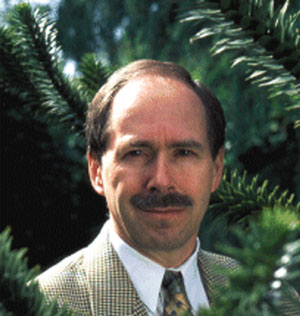
The last Nobel Prize for Physics this century goes to Gerardus ‘t Hooft of Utrecht and Martinus Veltman of Bilthoven in the Netherlands, “for elucidating the quantum structure of electroweak interactions in physics”.
Exactly 20 years ago the Nobel prize went to Sheldon Glashow, Steven Weinberg and Abdus Salam for their contributions to the electroweak theory the unified theory of weak and electromagnetic interactions, which was first published in 1967. It was ‘t Hooft’s and Veltman’s work that put this unification on the map, by showing that it was a viable theory that could make predictions possible.
Field theories have a habit of throwing up infinities that at first sight make sensible calculations difficult. This had been a problem with the early forms of quantum electrodynamics and was the despair of a whole generation of physicists. However, its reformulation by Richard Feynman, Julian Schwinger and Sin-Ichiro Tomonaga (Nobel prizewinner 1965) showed how these infinities could be wiped clean by redefining quantities like electric charge.

Each infinity had a clear origin, a specific Feynman diagram, the skeletal legs of which denote the particles involved. However, the new form of quantum electrodynamics showed that the infinities can be made to disappear by including other Feynman diagrams, so that two infinities cancel each other out. This trick, difficult to accept at first, works very well, and renormalization then became a way of life in field theory. Quantum electrodynamics became a powerful calculator.
For such a field theory to be viable, it has to be “renormalizable”. The synthesis of weak interactions and electromagnetism, developed by Glashow, Weinberg and Salam, and incorporating the now famous “Higgs” symmetry-breaking mechanism, at first sight did not appear to be renormalizable. With no assurance that meaningful calculations were possible, physicists attached little importance to the development. It had not yet warranted its “electroweak” unification label.
The model was an example of the then unusual “non-Abelian” theory, in which the end result of two field operations depends on the order in which they are applied. Until then, field theories had always been Abelian, where this order does not matter.
In the summer of 1970, ‘t Hooft, at the time a student of Veltman in Utrecht, went to a physics meeting on the island of Corsica, where specialists were discussing the latest developments in renormalization theory. ‘t Hooft asked them how these ideas should be applied to the new non-Abelian theories. The answer was: “If you are a student of Veltman, ask him!” The specialists knew that Veltman understood renormalization better than most other mortals, and had even developed a special computer program Schoonschip to evaluate all of the necessary complex field theory contributions.
At first ‘t Hooft’s ambition was to develop a renormalized version of non-Abelian gauge theory that would work for the strong interactions that hold subnuclear particles together in the nucleus. However, Veltman believed that the weak interaction, which makes subnuclear particles decay, was a more fertile approach. The result is physics history. The unified picture based on the Higgs mechanism is renormalizable. Physicists sat up and took notice. As Sidney Coleman at Harvard said, this work “turned the WeinbergSalam frog into an enchanted prince!”
One immediate prediction of the newly viable theory was the “neutral current”. Normally the weak interactions involve a shuffling of electric charge, as in nuclear beta decay, where a neutron decays into a proton. With the neutral current, the weak force could also act without switching electric charges. Such a mechanism has to exist to assure the renormalizability of the new theory. In 1973 the neutral current was discovered in the Gargamelle bubble chamber at CERN and the theory took another step forward.
The next milestone on the electroweak route was the discovery of the W and Z carriers, of the charged and neutral components respectively, of the weak force at CERN’s protonantiproton collider. For this, Carlo Rubbia and Simon van der Meer were awarded the 1984 Nobel Prize for Physics.
The electroweak baton was taken up in 1989 by CERN’s LEP electronpositron collider, where precision data enabled ‘t Hooft and Veltman’s technique to be put to work to predict the mass of the sixth “top” quark. Although at the time unseen, physicists knew that the top quark had to be contributing indirectly. Corrections involving the top quark have the unusual property of becoming larger as the top mass increases. When the top quark was discovered at Fermilab’s Tevatron protonantiproton collider in 1995, its mass was exactly where the calculations said it would be.
The only missing link in the electroweak picture now is the Higgs mechanism, and, with LEP exploring new energy regimes, the physicists are eagerly scanning the latest LEP data. On the sidelines is CERN’s LHC, which will bring Higgs physics to its ultimate conclusion.





